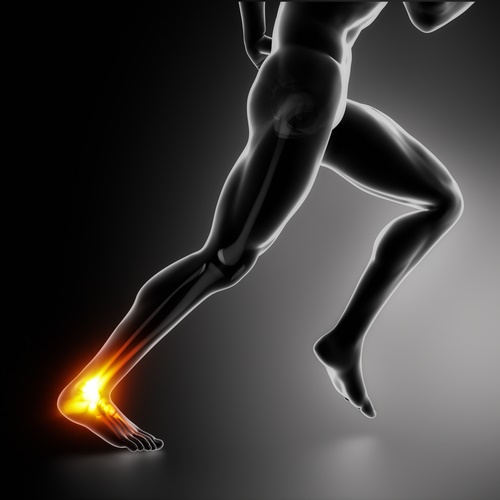
Each year, more than 1 million people end up in the emergency room due to problems with their ankle.
If you've recently injured your ankle, you may be wondering if it's broken, or a just sprain. Unfortunately, when some ankle injuries go untreated they can have long-term effects on your health and wellbeing.
Understanding the injury, and the symptoms that you have, are the best ways to determine how you should proceed. If you think there may be an issue, you should contact a New York foot and ankle doctor sooner than later.
How do Ankle Injuries Occur?
Ankle injuries can happen in a number of different ways. It can be as simple as putting your foot down on uneven terrain, or as complicated as a chronic, reoccurring injury due to overuse.
Often, an ankle injury will happen during athletic activity, and these injuries can range from sprains, to tendon tears and fractures.
Is your Injury a Sprain or a Break?
A sprain is when the ligaments in your ankle are damaged. Ligaments are like tough rubber bands that hold your bones where they need to stay, keeping your joints stable.
While these naturally move and stretch, a sprain means that you've stretched or torn the ligaments beyond their limits.
Ankle sprains can be relatively mild, but can also be excruciating. You may have swelling, severe pain, and be unable to walk.
Here are some signs that your ankle is broken:
Inability to Walk
While a slight sprain may allow you to limp, most people won't be able to walk without severe pain if the ankle is broken.
Pain in Your Bone
If you press on the ankle bone, it's unlikely to hurt if you have a sprained ankle, but if you've broken your tibia or fibula, you'll immediately feel pain if you press on these bones.
On the outside of the foot you have your 5th metatarsal bone which can also fracture when you sprain your ankle, so be sure to check this as well.
Bone Protrusion
Your foot and ankle will swell with both sprains and fractures, but if your bone is fractured, a piece of bone will now be unstable. Usually, the soft tissue surrounding this bone will keep it in the right place.
However, sometimes this bone is moved out of its usual position. This may mean its visually protruding in the wrong place and it's a sign that it's definitely broken.
Extensive Bruising
Bruising will also occur with both sprains and breaks. However, because ligaments are mostly located at the tips of your ankle bones, bruising will usually be seen in that location.
Bones have a lot of blood flow which increases bruising. A fracture that happens just at the tip of your ankle bone may have similar bruising to a sprain, but often a broken ankle will have bruising extending higher up in your leg.
Shock
If you break a bone, your body may go into shock. It's not uncommon to feel like you need to vomit or to feel dizzy or cold.
Numbness
When you sprain your ankle, you'll feel pain. However when you break it, you may feel a weird numbness which transitions to a sharp shooting pain when you you’re your ankle or try to put pressure on it.
What to do For a Sprain
If you've just slightly sprained your ankle, it will usually recover on its own. You can take anti-inflammatory drugs like Aleve, Motrin, or Advil. It's also a good idea to use the RICE method:
- Rest
- Ice
- Compression
- Elevation
The compression part of the method requires an elastic bandage which will also provide support.
If you're in a lot of pain, it's a good idea to go to the doctor to check that you haven't significantly torn your ligaments or broken your ankle.
What to do For a Break
If you break your ankle, it needs to be immediately immobilized. This will often involve a splint and/or crutches to help you stay off it.
If your bone has broken through the skin, cover it with a clean bandage and immediately seek medical attention.
You'll also need to control the swelling, and remove any toe rings or ankle bracelets. Use an ice pack to ice the area and compress it lightly with a bandage. Don't attempt to align your bones yourself or let anyone other than a doctor guide the bones back into place.
Above all, get medical attention as soon as you can. Walking on the injury and failing to get the bones aligned can mean problems healing and potential ankle surgeries in the future to correct misaligned bones.
Recovering From a Sprained or Broken Ankle
A small sprain may feel better after just a few days, while worse sprains and tears may need several weeks before they heal.
Broken ankles will typically take much longer to heal than sprains. You will usually be in a boot for 4-6 weeks, which will cause the muscles surrounding the ankle to atrophy slightly.
You'll usually need to do some rehab, with stretching and basic exercises, and may also need to go to physical therapy to strengthen your ankle and regain your balance.
Wrapping up
Spraining or breaking your ankle can have a negative impact on your life, but after a couple of weeks or months, you'll be back on your feet and will be easing back into your normal activities.
The key thing to remember if you sprain your ankle badly, or you think it's fractured, seek immediate medical attention.
This will prevent you from having complications down the line if your ligaments or bones don't heal correctly.
If you think you've suffered ankle injuries and may need a New York Orthopedic Surgeon, or you have another orthopedic medical issue, get in touch today to make an appointment.







